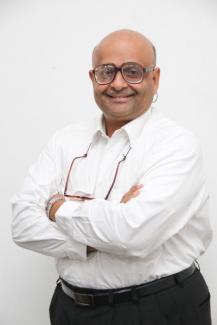Jayesh Bellare
Core Faculty
Professor

131, Chemical Engineering
Core Faculty
Professor
Elected Fellow of Electron Microscopy Society of India 2010
Elected Fellow of National Academy of Sciences India 2010
Elected Fellow of Indian National Academy of Engineering 2010
ICI Award for Excellence in Process/Product Development Ind. Inst. of Chem. Engineers 1996.
Best Microscopist from Developing Countries Award Microscopy Society of America 1993
Presidential Award Electron Microscopy Society of America 1986
Kazato Grant International Congress on Electron Microscopy 1986
NRDC Invention Intelligence/National R&D Council Prize for Automatic R.I. sensor 1983
End stage renal disease (ESRD) is the complete failure of kidney functions, where kidneys can no longer remove wastes, concentrate urine, and regulate many other important body functions. Hemodialysis is one the most effective and widely used mode to regulate the kidney functions artificially. The hemodialyzer cartridge (disposable blood filter) is the key component of this treatment technology and is currently imported. At the Department of Chemical Engineering, we have successfully developed an indigenous and low-cost technology for continuous pilot-scale production of hollow fiber membranes to be used in hemodialysis and built prototype microdialyser. Our formulated special antioxidative composite polsulfone/vit E TPGS membrane material improves the performance in both separation and biocompatibility front. This will permit faster treatment, lesser side reactions and could spur novel devices like portable/wearable dialysers. Along with these we have also used the HFM technology in making a step towards bioartificial organs like bioartificial liver and bioartificial pancreas.
Bone grafts are frequently used in surgical interventions for such skeletal deficiencies and are second to blood transfusion on the list of transplanted materials. We have developed ideal bone graft by preparing electrospun membranous 2D nano-fibers and biodegradable 3D composites as a biomimetic scaffold. The scaffolds have shown promising performance both in-vitro and in-vivo. Thus, the new materials developed here are ready for human clinical trials and could help in fast healing of various dentistry and orthopaedics.
Stem cell therapy and tissue engineering have emerged rapidly due to the limitations associated with organ transplants such as immune rejection and donor site morbidity. Stem cells are special kind of cells which have ability to renew itself and as well as to differentiate into different kinds of cells. The problem with cell therapy is that low number of cells is obtained from single donor that is not sufficient for transplantation and when they are cultured in vitro, the cells lose their renewal capacity and start to differentiate. To address these issues, our research is focused on development of scaffold that allows proliferation of stem cell as well as maintains their pluripotency. We study how scaffold properties can be modulated to assess the role of cues in affecting stem cell fate and how this system can be used to improve stem cell-based therapies.